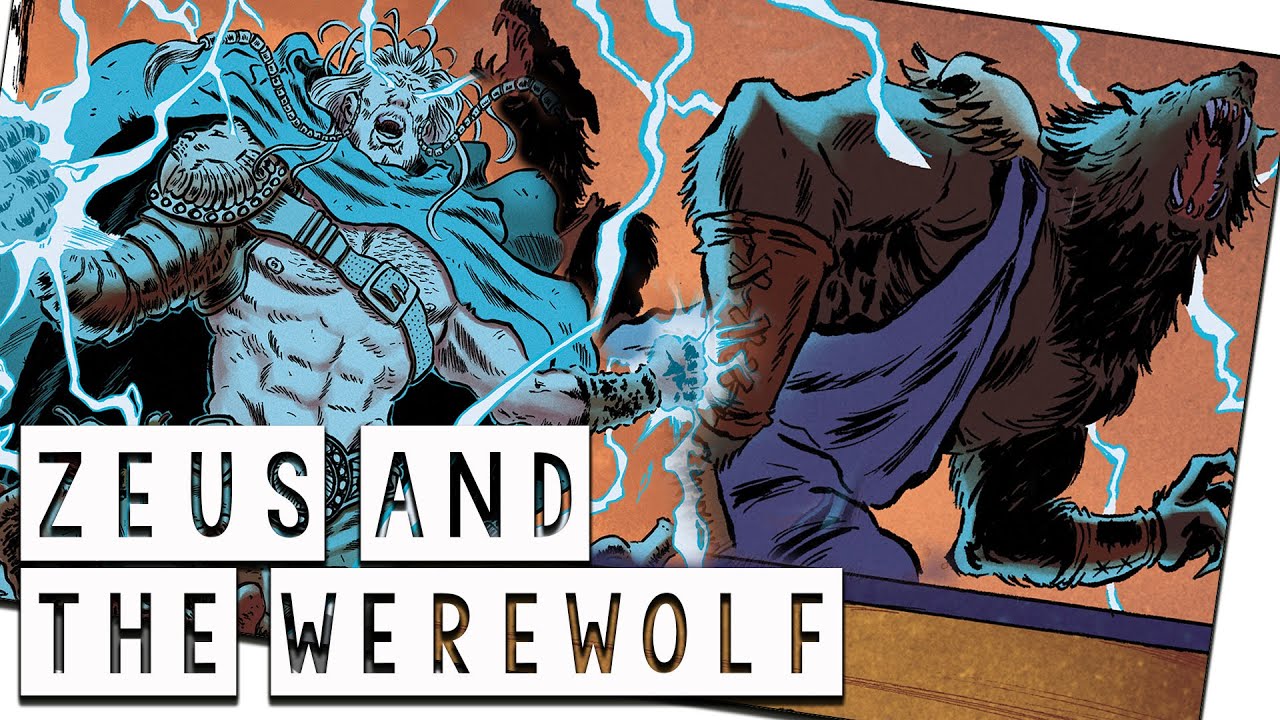Sidebar
Mythology
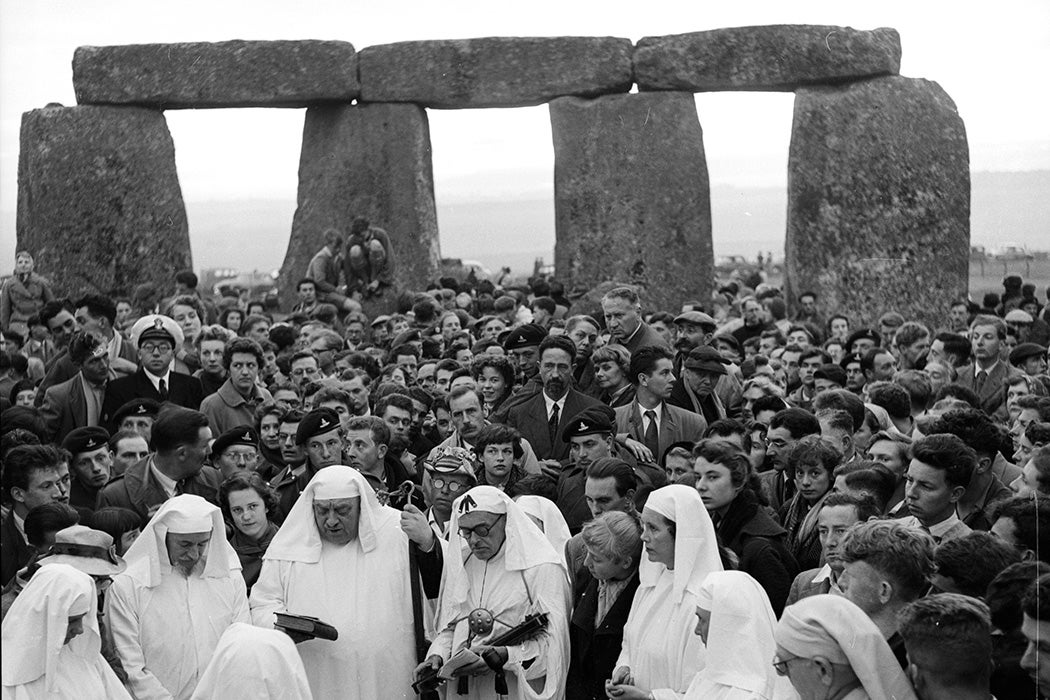 daily.jstor.org
daily.jstor.org
cross-posted from: https://lemm.ee/post/12600657 *** Seventeenth-century English antiquarians thought that Stonehenge was built by Celtic Druids. They were relying on the earliest written history they had: Julius Caesar’s narrative of his two unsuccessful invasions of Britain in 54 and 55 BC. Caesar had said the local priests were called Druids. [John Aubrey](https://daily.jstor.org/archiving-the-inventor-of-the-archive/) (1626–1697) and William Stukeley (1687–1765) cemented the Stonehenge/Druid connection, while self-styled bard Edward Williams (1747–1826), who changed his name to Iolo Morganwg, invented “authentic” Druidic rituals. Druidism has come a long way since. In 2010, The Druid Network was listed as a charity in England and Wales, essentially marking the official recognition of Druidism as a religion. ([74,000 called themselves Druids](https://isismagazine.org.uk/2023/04/invisible-by-design-druidism-in-modern-britain/) in a recent census.) Historian Carole M. Cusack positions Druidism as one of the branches of the tree of [Paganism and/or New Age-ism(s)](https://www.jstor.org/stable/23244956?mag=stonehenge-before-the-druids-long-long-before-the-druids), which burst into all sorts of growth during the twentieth century. Modern Druidism fits into the smorgasbord of what Cusack calls the “deregulated spiritual marketplace” of our times. But there’s a disconnect here. In the popular imagination, Stonehenge and Druidism now go together like tea and crumpets. Historically, Stonehenge, a product of Neolithic Britain, predates Caesar by thousands of years. It had nothing to do with Druids and certainly nothing to do with modern Druidism. “The false association of [Stonehenge] with the Druids has persisted to the present day,” Cusak writes, “and has become a form of folklore or folk-memory that has enabled modern Druids to obtain access and a degree of respect in their interactions with Stonehenge and other megalithic sites.” Meanwhile, archaeologists continue to explore the centuries of construction at Stonehenge and related sites like Durrington Walls and the Avenue that connects Stonehenge to the River Avon. Neolithic Britons seem to have come together to transform Stonehenge into the ring of giant stones—some from 180 miles away—we know today. Questions about construction and chronology continue, but current archeological thinking is dominated by findings and analyses of the Stonehenge Riverside Project of 2004–2009. The Stonehenge Riverside Project’s surveys and excavations made up the first major archeological explorations of Stonehenge and surroundings since the 1980s. The project archaeologists postulate that Stonehenge was a long-term cemetery for cremated remains, with Durrington Walls serving as the residencies and feasting center for its builders. The hippie-turned-New Age movements birthed in the 1960s and 1970s resulted in a surge of interest in Stonehenge. Tens of thousands, not all of them Druids, attended the Stonehenge Free People’s Festival starting in 1974. In 1985, the festival was halted by English Heritage, the organization that maintains Stonehenge today, because of the crowds, disorder, and vandalism. Druids were also banned from performing rituals on site. However, English Heritage and the Druids soon came to an understanding: Druids could use the site as long as there was no associated festival. So the clash of academic archaeology and what might be called folk archaeology comes into stark focus at Stonehenge. Modern paganism is not without interest, of course, but continuing revelations about prehistory—whether of neolithic Britain or elsewhere—should be a lot more interesting. As are the techniques used to extract data from the past: an example used to telling effect by the Stonehenge Riverside Project is the analysis of lipid remains on pottery: we can tell if the pot held dairy products or the fat of ruminants or pigs, giving insights into the diet four thousand years ago. Another example: strontium isotope in bovine molars show that beef consumed at Durrington Walls was raised at least thirty miles away. Of course, all this is not as photogenically mysterious/magical as robed Druids in the long shadows of a midwinter sunset. Academic archaeology, which suffers from charges of “elitism” in the reactionary populist politics of anti-intellectualism and anti-science, has a hard time competing with the popular irrationality of mysticism. Maybe the real Stonehenge needs more publicists. *** Subscribe to !history@lemm.ee and !history@lemmy.ml
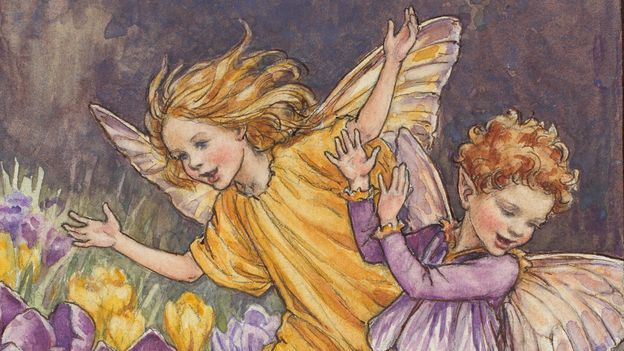 www.bbc.com
www.bbc.com
cross-posted from: https://lemm.ee/post/10662845# When Britain was gripped by 'fairy mania' *"Fairycore" may be trending on social media today but 100 years ago supernatural sprites were a national obsession. Holly Williams explores fairy fever.* Imagine a fairy. Is the picture that appears in your mind's eye a tiny, pretty, magical figure – a childish wisp with insect-like wings and a dress made of petals? If so, it's likely you've been influenced by Cicely Mary Barker, the British illustrator who created the Flower Fairies. 2023 marks 100 years since the publication of her first book of poems and pictures, Flower Fairies of the Spring – an anniversary currently being celebrated in an exhibition at the Lady Lever Gallery in Merseyside, UK. The Flower Fairies' influence has endured: they have never been out of print, and continue to be popular around the world – big in Japan and in Italy, where Gucci released a children's range featuring Barker's prints in 2022. Billie Eilish recently had Flower Fairies tattooed on her hand, while their whimsical, floral aesthetic can be seen in the TikTok "fairycore" trend. 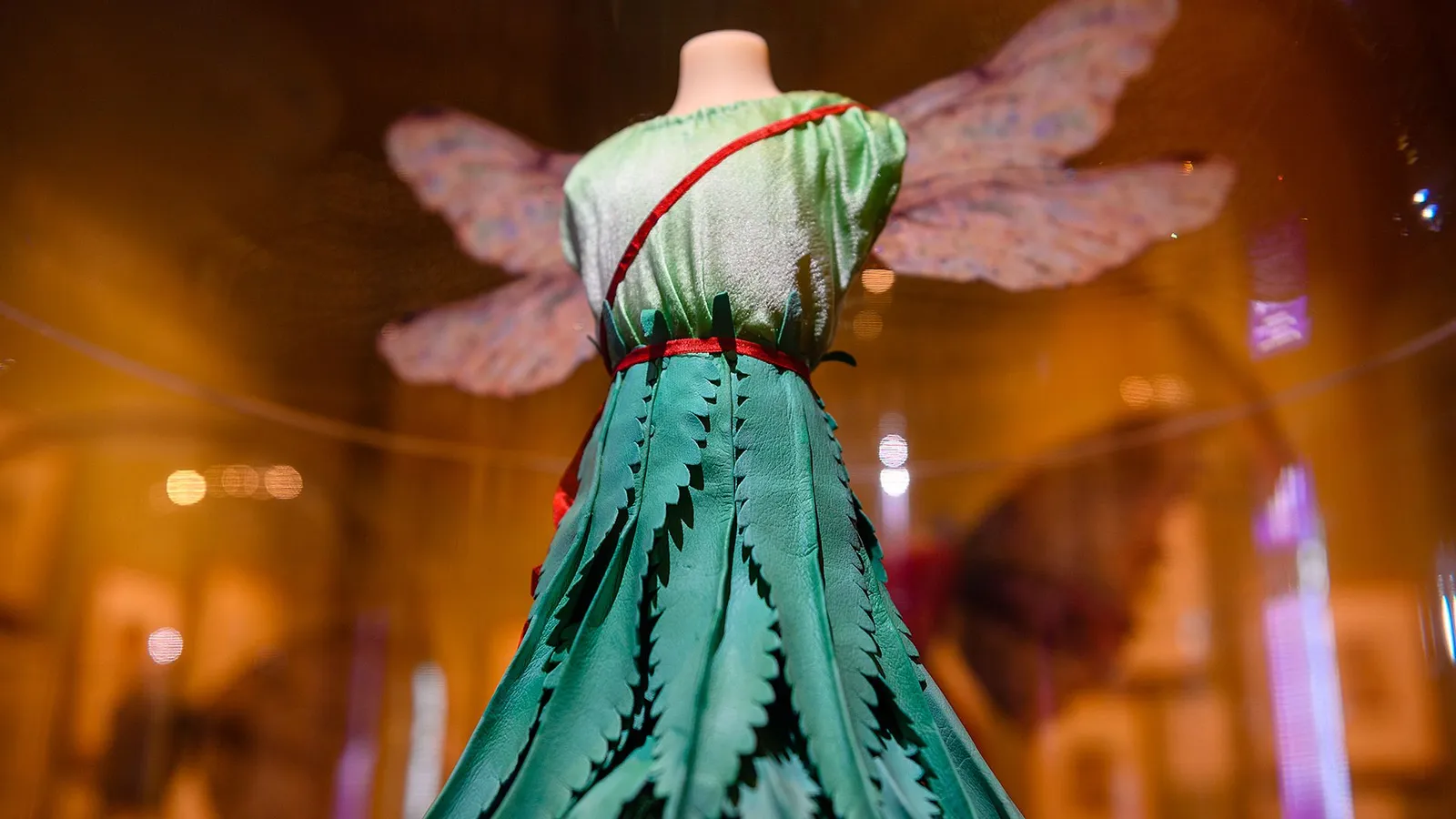 (*An exhibition at the Lady Lever Art Gallery explores the Flower Fairies phenomenon, and features pantomime costumes (Credit: Pete Carr)*) Barker's delicate watercolours certainly helped cement several tropes we now consider classic – almost essential, in fact – in the iconography of the fairy: they are miniature, sweet and youthful, they are intertwined with plants and the natural world, and they are distinctly twee. Yet her drawings were also "firmly footed in realism" points out Fiona Slattery Clark, curator of the show. "The children were all painted from life [and] her plants and flowers are as realistic as possible." Barker drew children from the nursery school her sister ran in their house in Croydon near London; each was assigned a flower or tree, and Barker's detailed illustrations were botanically accurate – she would source samples from Kew Gardens, says Slattery Clark. Even the petal-like wings and fairy outfits were closely based on plants: an acorn cup becoming a jaunty cap, a harebell becoming a prettily scalloped skirt. > For many hundreds of years, fairies were not necessarily tiny and fey, but grotesque or fierce elemental forces The Flower Fairies were an immediate hit – but Barker was far from the only artist of her era to find success with fairies. In fact, fairy fever swelled within the United Kingdom for over half a century, reaching something of a peak around the time the Flower Fairies emerged in 1923. Over 350 fairy books were published in the UK between 1920 and 1925, including in Enid Blyton's first fairy foray, a collection of poems called Real Fairies in 1923. Fairy art even had the stamp of royal approval: Queen Mary was a fan of Ida Rentoul Outhwaite's ethereal drawings, and helped popularise them by sending them in postcard form. Fairies have long been with us – in our imaginations, at least. But for many hundreds of years, they were not necessarily tiny and fey, but grotesque or fierce elemental forces, capable of great darkness. "In 1800, if you thought your child was a fairy it would have been like demonic possession – you would have put that child in the fire to drive out the fairy," points out Alice Sage, a curator and historian. 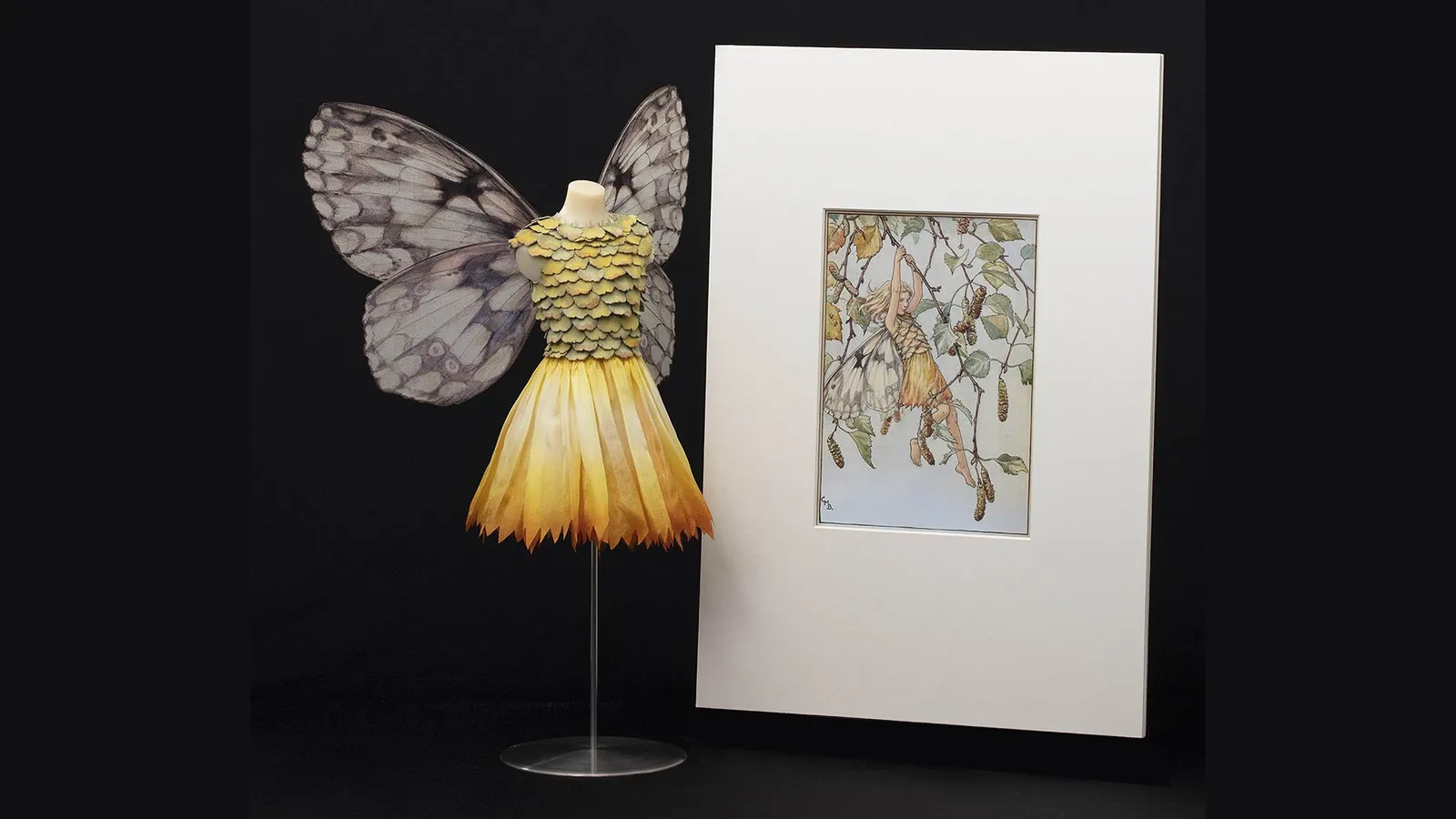 (*Each of Barker's fairies corresponded to a plant, tree or flower – pictured, the Silver Birch Fairy (Credit: Estate of Cicely Mary Barker 1934 Flower Fairies)*) Yet within 100 years, the whole conception of fairies completely changed. "Throughout the 19th Century, fairies became increasingly miniaturised, sapped of their power – trapped in the nursery," says Sage. As the Victorian era progressed, they are increasingly associated with childhood; as their popularity grew, they shrank. But first, fairies became a fashionable subject for Victorian artists, often taking inspiration from Shakespeare's A Midsummer Night's Dream and The Tempest. John Anster Fitzgerald, Edwin Landseer, John Everett Millais, Joseph Noel Paton, Arthur Rackham and even JMW Turner – among many others – painted supernatural sprites from the 1840s onwards. But there was still a sense of otherworldly strangeness in many of their depictions – as seen in the work of Richard Dadd, who made his hyper-intricate fairy paintings while living in a Victorian asylum after killing his father. Then two wider cultural developments came along that changed fairy reputations forever. One was that "children's literature happened", says Sage. The Victorians promoted the idea of childhood as a time of innocence, requiring its own entertainment. Illustrated children's books really took off from the 1870s, with fairies a staple, and increasingly cutesy, feature. The second was pantomime. "Every Victorian pantomime would have this big spectacle of transformation at the end, where children dressed as fairies filled the stage," says Sage. The standard fairy fancy dress outfit today is basically the same as what these Victorian children would have worn: think tinsel, sparkly sequins, and translucent, gauzy wings. ### Huge popularity Moving into the 20th Century, fairies showed few signs of buzzing off – if anything, they cemented their place. "In the Edwardian era, Peter Pan started to be performed [in 1904], and that carried on for the next 25 years," points out Slattery Clark – enough time for several generations of children to learn to clap their hands to show they believe in fairies. And as the new century lurched through global upheaval via World War One, fairy mania continued – if anything, widening and deepening. "That golden age of children's literature is really an upper middle-class phenomenon," points out Sage. "What happened from World War One onwards is it explodes beyond that, and becomes an adult concern." 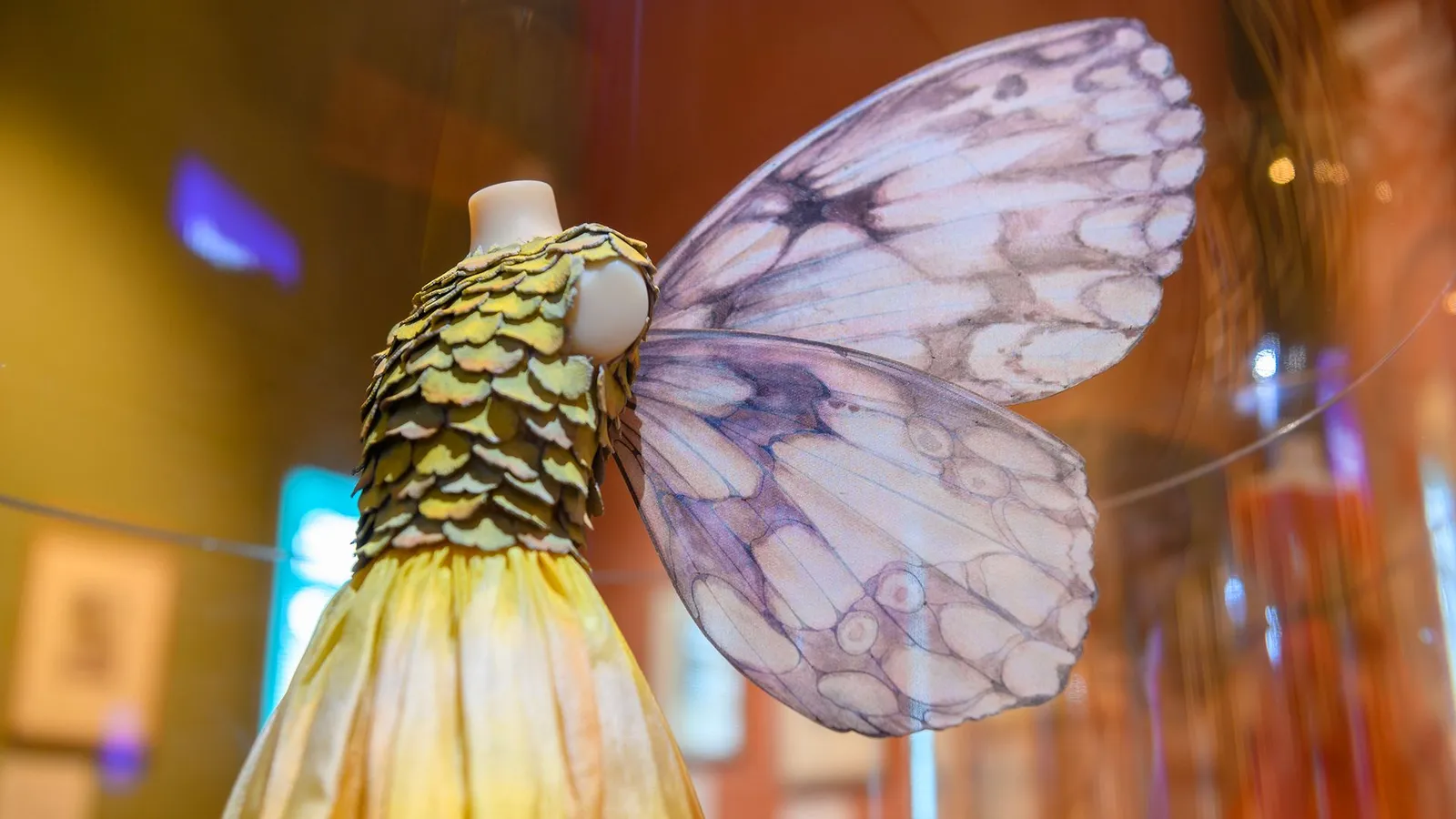 (*The costumes displayed in the exhibition are based on the Flower Fairies illustrations (Credit: Pete Carr)*) Having been whisked from the woods into the nursery, fairies then made their way to troubled adults on the battlefield or waiting at home. Consider the huge popularity of a print, Piper of Dreams by Estella Canziani, during World War One: a wispy image of a man playing a pipe and surrounded by tiny fairies, it sold a staggering quarter of a million copies in just 1916. "It's about belief and it's about hope – that's what fairies represent in that time," says Sage. "The supernatural becomes a way of finding some luck and brightness, [when] people don't have control over their lives, their future, their families." > For Conan Doyle, it was all about a search for another realm of being that related to life after death, vibrations, telepathy, telekinesis – Alice Sage Today, we associate fairies with little girls – but this was an era when fairy art was popular with grown men, too. And technology helped spread it: there was an explosion in sending postcards around this time. They were cheap to buy, and free to post to a serving soldier abroad. "Suddenly everyone can send fairies, and they're flying through the air and across the seas. You can’t underestimate the practical aspect of it," says Sage. Indeed, Barker herself cut her teeth illustrating such postcards: she produced a patriotic series showing "Children of the Allies", in different forms of national dress, in 1915, followed by a series of characters from Shakespeare, before teasing the Flower Fairies with a set of "Fairies and Elves" postcards in 1918. Barker never made any claims for fairies being real – "I have never seen a fairy", she wrote in a foreword to Flower Fairies of the Wayside. But it is worth noting that she first published the Flower Fairies at a moment when the desire to believe in magical beings was at a rare high. In 1920, Britain was gripped by the story of the Cottingley Fairies, after two girls claimed to have photographed fairies at the bottom of their garden in West Yorkshire – and were widely believed. Their beautiful photographs were created by paper cut-outs, floating on hat pins. Although many were sceptical, they nonetheless also fooled many of the great and the good – the photographs were brought to prominence by no less than Sir Arthur Conan Doyle, the author of Sherlock Holmes, who wrote a whole book about it, The Coming of the Fairies, in 1922. 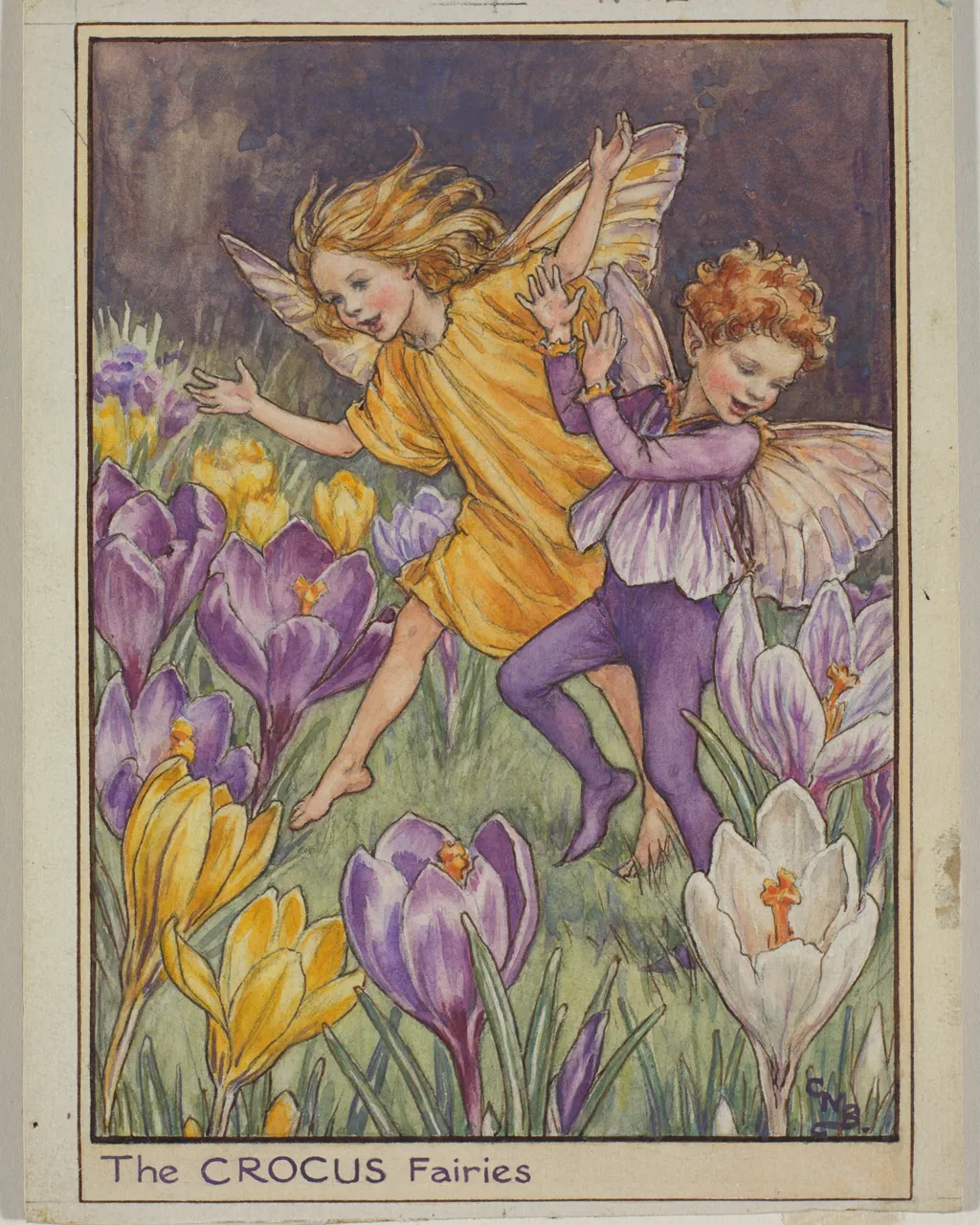 (*The Crocus Fairies from Flower Fairies of the Spring – the watercolours are still popular today with “fairycore” fans (Credit: Estate of Cicely Mary Barker 1934 Flower Fairies)*) Cousins Elsie Wright and Frances Griffiths were aged 16 and nine when they took the first photos. Many years later, in the 1980s, they admitted it was a hoax, explaining that they kept up the pretence that the fairies were real a because they felt sorry for the middle-aged men, like Conan Doyle, that so wanted to believe. There was, at the time, a serious resurgence in spiritualism in the UK, with seances and attempts to contact the dead proving understandably tempting for the bereaved. Conan Doyle himself became interested in a spirit world after his son died in the war. And for believers, this wasn't "woo-woo" nonsense – it was supposedly based in science. After all, scientific advances were genuinely explaining hitherto unknown and invisible aspects of our world. "For Conan Doyle, it was all about a search for another realm of being that related to life after death, vibrations, telepathy, telekinesis – this fascinating world on the edge of the limits of human perception," says Sage. "And obviously that's connected to the loss of his son in World War One." Like the Flower Fairies, the Cottingley photographs further reinforced the association between children and fairies, as well as cementing what a fairy looked like in the public consciousness. Yet aside from Tinkerbell, Flower Fairies are probably the only image from the fairy-fever era still instantly recognisable today. Why, of all the fairy content out there, have Barker's images endured so strongly over the past 100 years? "They were [originally published] in full colour, and a lot of books were published in black and white," begins Sage. What looked novel at the time, now seems charmingly period – but the delicacy, intricacy, and imagination of Barker's pictures can still cast a spell. "It's like dolls houses – things that are very miniaturised, but very detailed and realistic, scratch a certain itch," suggests Sage. "They are absolutely beautiful, which helps." "It's a real celebration of nature – there is a strong educational aspect to her work," puts forward Slattery Clark, emphasising the botanical accuracy of Barker’s drawings. The educational argument might sound absurd given we're discussing fairy art, but as a child who was obsessed with Flower Fairies, I can attest to the truth of it: all the wildflowers I know the names of I learned from these books. 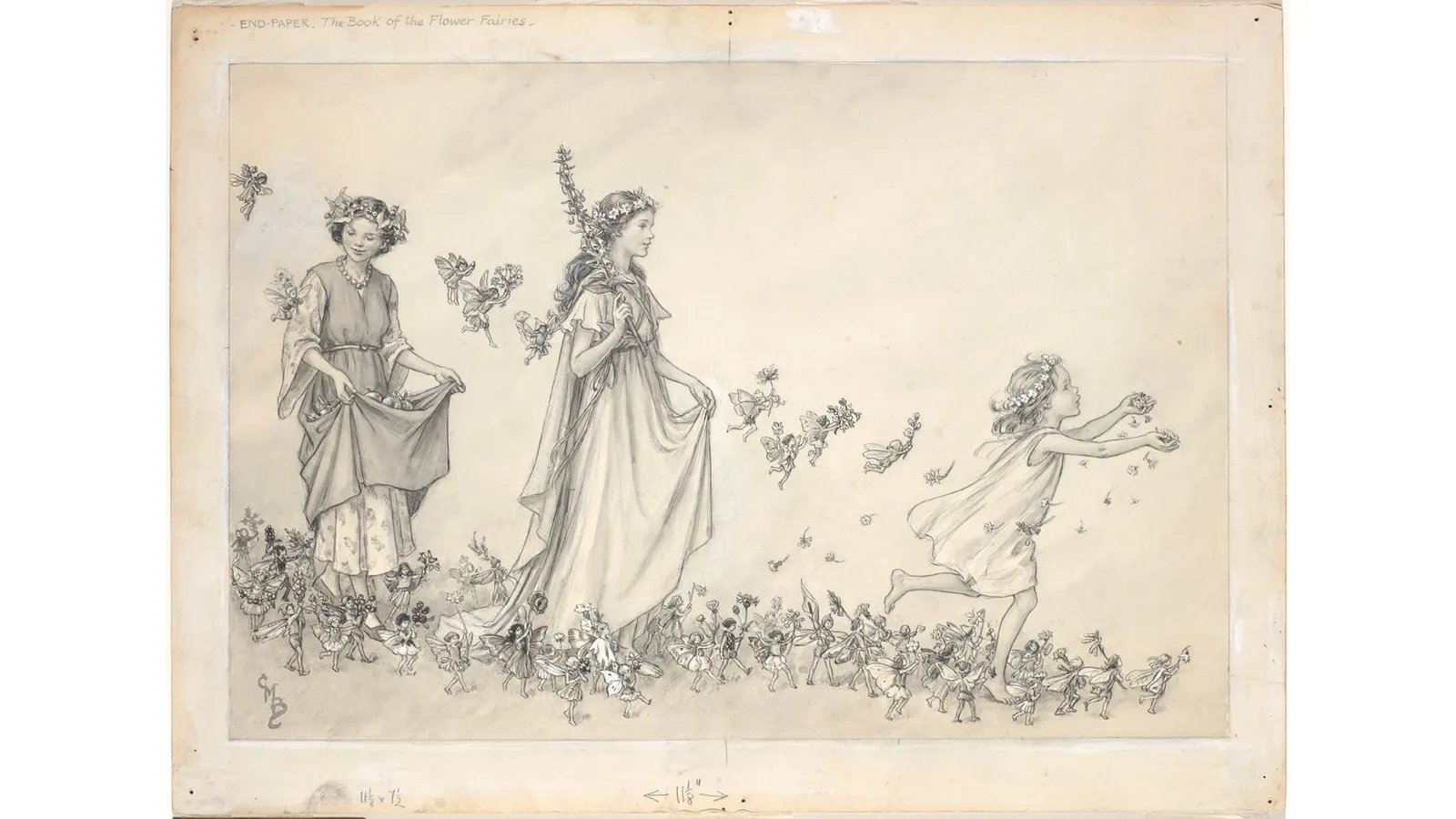 (*Cicely Mary Barker's exquisite illustrations were hugely popular in the 1920s (Credit: Estate of Cicely Mary Barker)*) Having each fairy very specifically related to a particular plant was also commercially canny – whether Barker intended this or not, it created space for identification, for collectability, for a kind of innate brand franchising. "In children's culture, we create series that are collectable, that you identify with… It's like Pokemon or something!" laughs Sage. "When I speak to people about the Flower Fairies, especially groups of sisters, it's always 'which one were you?'" Still, Sage is pleased to see the Flower Fairies exhibited in a fine art context at the Lady Lever gallery. For a long time, men painting fairies has been considered art – but when women do it, it's just silly flowery stuff for children. "This is fine art – it's mass, popular fine art," insists Sage. "I think a lot of the diminishment of fairies and children's illustration is from a misogynist, snobbish and elitist art historical tradition. I'm so excited to see this kind of exhibition, that reclaims this history." Consider this a beating of wings, then, that takes fairies back out of the nursery – and into the gallery. Flower Fairies is at the Lady Lever Art Gallery, Port Sunlight Village, UK until 5 November. Holly Williams' novel What Time is Love? is out in paperback now.*___* *** Join !fantasy@lemm.ml
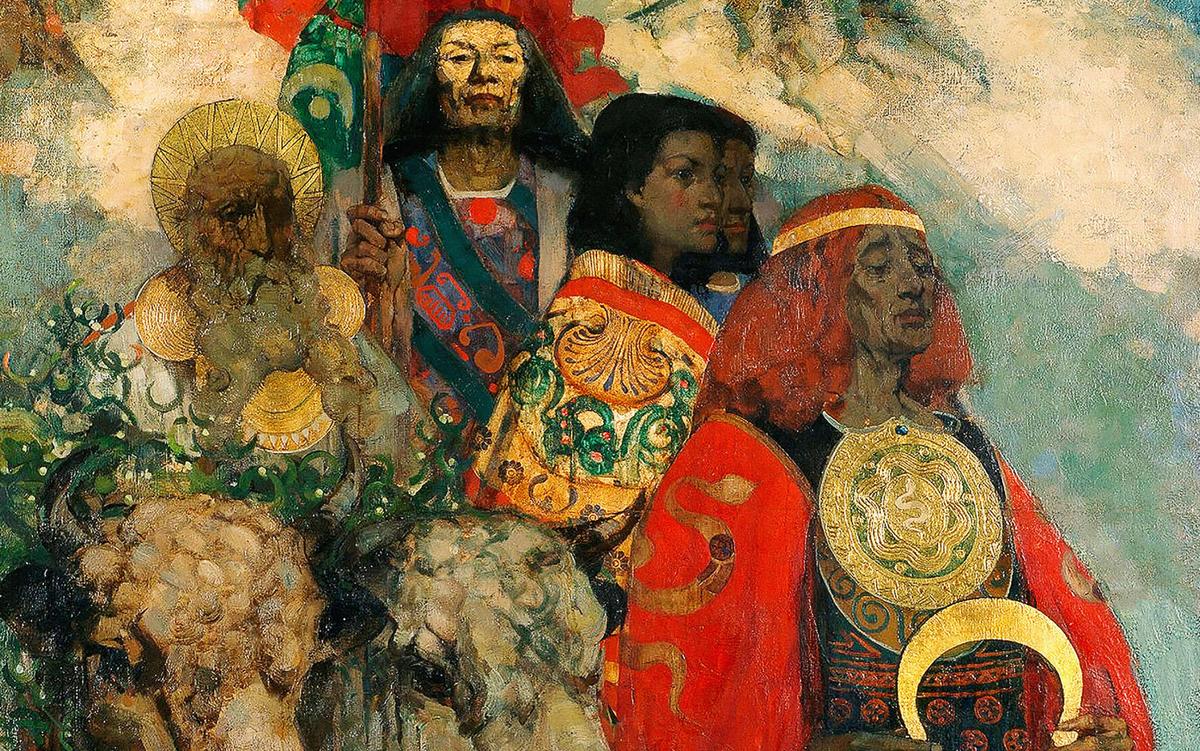 aeon.co
aeon.co
cross-posted from: https://lemm.ee/post/9405067 *** More than 30 Greek and Roman writers from around 200 BCE to the 4th century CE were fascinated by this enigmatic group of ritualists. There has been a lot of controversy concerning the veracity of these ancient authors and their plagiarism or recycling of ‘facts’ about the Druids. However, I do have faith in one: Julius Caesar. He was in Gaul for nearly 10 years in the 50s BCE, leading the war of Roman conquest and so he knew the region personally rather than relying on secondhand information. And, because he was writing his chronicle for scrutiny by the Senate in Rome, it is doubtful whether he would have got away with fanciful imaginings because they could have been contradicted by his fellow officers. Caesar seems to have had quite intimate knowledge of Druidism, gained – at least in part – from his close friendship with a Druid named Diviciacus, who was also the ruler of a prominent Gallic tribe in eastern Gaul, the Aedui, an ally of Rome. We know of Diviciacus from another contemporary source, a comment by the orator Cicero who had met Diviciacus in Rome, and spoke warmly of the Gallic Druid as particularly skilled in the art of divination. So, while many ancient authors painted negative pictures of the Druids, condemning them as blood-soaked savages lurking in sinister forests, Caesar respected them for their erudition as natural scientists, teachers, healers and their specialism in liaising with the denizens of the otherworld. It is this last skill that appears to have left intriguing archaeological traces, including the rite of human sacrifice. > The sophistication of the murder suggests it was to keep the victim hovering between life and death for some time In August 1984, industrial peat-cutting operations at Lindow Moss in Cheshire, in northwest England, revealed a horrific object: part of a human body. The police were called in to investigate a possible murder, and the body parts were soon identified as belonging to a young man. However, this man hadn’t died recently but about 2,000 years ago, at the time when Britain was in the process of becoming a Roman province. Lindow Man, as he is known, was the victim of a viciously violent and repeated assault that ended in his death and interment in a boggy pool sometime in the mid-1st century CE. His immersion in the swamp preserved not only his skeleton but his skin, hair and internal organs – a wonderful resource for archaeologists. He was fit, in his mid-20s, and we think he was a person of high status for his fingernails were in mint condition and his facial hair was neatly trimmed using a razor (an expensive piece of grooming equipment). The reason for this man’s significance in the context of the Druids lies in the contents of his gut. There is a description of ancient Druidic rituals in Gaul by the Roman author Pliny the Elder (writing in the mid-late 1st century CE) in his massive Natural History, a multi-volume work describing natural curiosities throughout the known world. On the sixth day after the new moon, the Druids would gather beneath a sacred oak. One of them would climb the tree to cut down mistletoe from its branches, using a gilded sickle. According to Pliny’s testimony, the Druids regarded mistletoe as having the spiritual power both to heal and to promote fertility in crops and livestock. In the final hours before his brutal death, Lindow Man had consumed a special meal – a kind of ‘last supper’ – that contained a peculiar mixture of seeds, wild plants, cereal grains and mistletoe pollen in sufficient quantities for it to have been deliberately included in the griddled loaf that the luckless victim had consumed just before his brutal death. The complex manner of his killing strongly suggests human sacrifice. He was stunned by a violent blow to the head, garrotted, and his throat cut. Then, while still breathing (there was bog water found in his lungs), he was thrust facedown into the marsh: a highly orchestrated ritual killing. And the presence of the mistletoe might, just might, tie his death to Druidic sacrificial action. The sophistication of the murder suggests that it was conducted with care and with the intention to keep the victim hovering between life and death for some time. (Bogs themselves are liminal and contradictory places, neither fully dry nor wet.) And, even after his death, the body of Lindow Man was suspended between states of being, since its preservation did not allow his remains to decay and thus, perhaps, denied his spirit to join the ancestors. *** more to read on the site :)
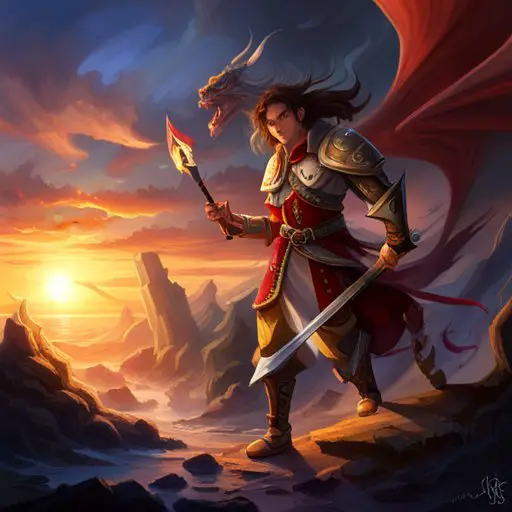 vikingswarroom.com
vikingswarroom.com
As a Tolkien fan, I found myself exploring some of his writings outside of Middle-earth. One of the stories I really like is his version of the Sigurd story from the Volsung Saga, called *The Legend of Sigurd and Gudrún*. One mini-story within the greater one is the story of Sigurd and his fight with a dragon named Fáfnir, and that is what the link in this post is focused on. There's a lot more going on in the story than just what you are presented with in this snippet, but it's still a fun snippet to share that was written by someone that obviously enjoyed the story.

Much like the Camelot map that I just posted, this is another that I found and printed a copy of to keep nearby while reading some Malory.

I'm reading Le Morte D'Arthur right now and went looking for some maps to help put things in context. Here's the map of Camelot that I ended up printing off a copy of to keep handy.
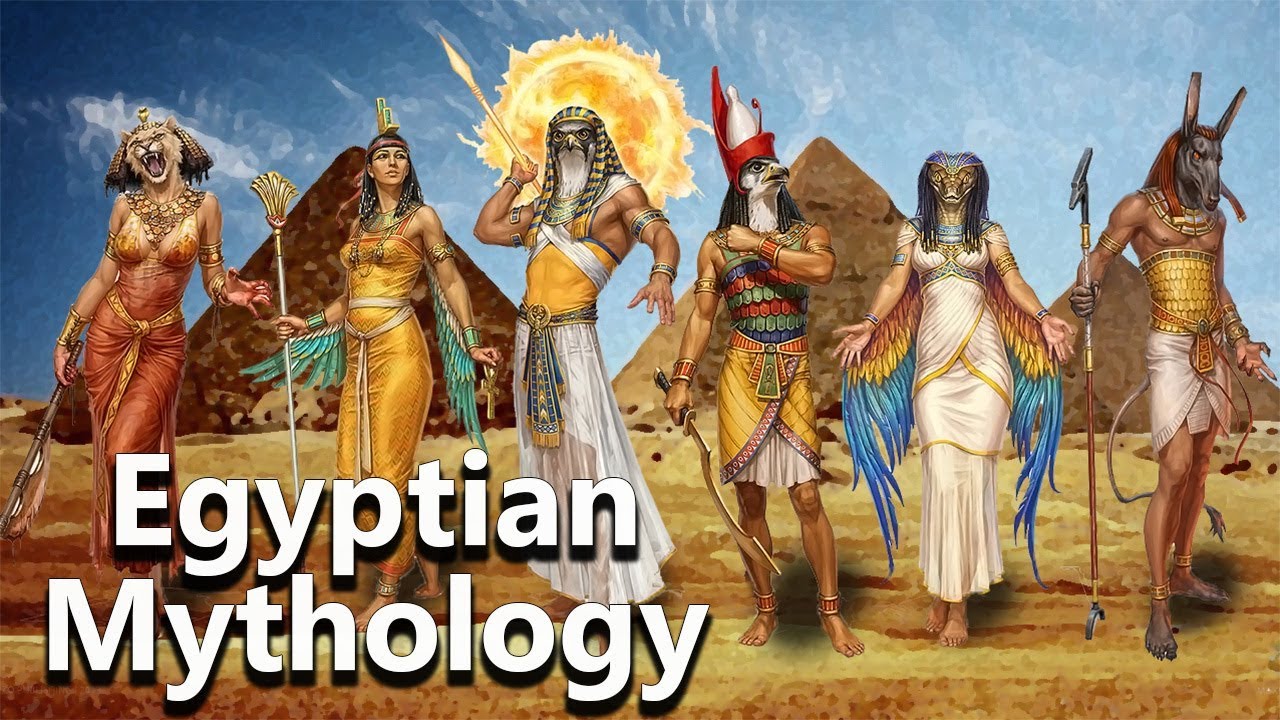 youtu.be
youtu.be
I really like ancient Egypt.
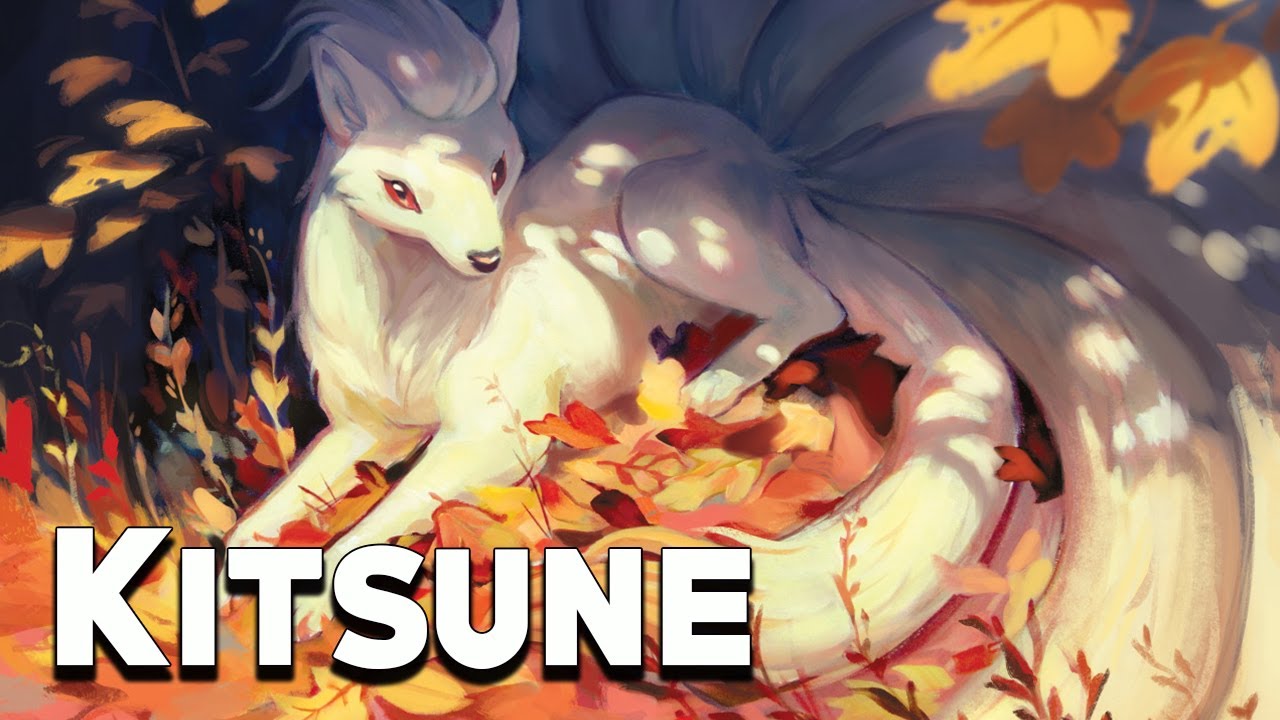 youtu.be
youtu.be
A mythical creature, a very popular character in Japanese anime, and a wonderful animal.
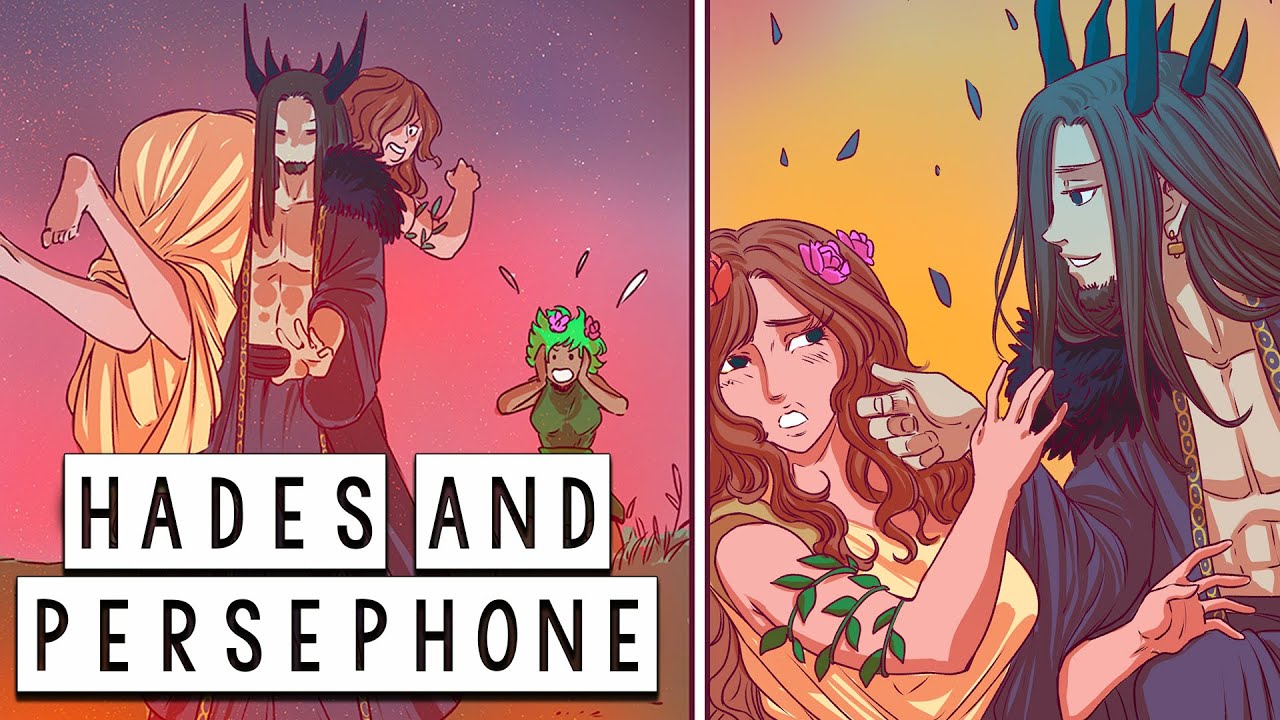 youtu.be
youtu.be
This is one of my favorite myths.
 youtu.be
youtu.be
The second part of the myth of Eros and Psyche.
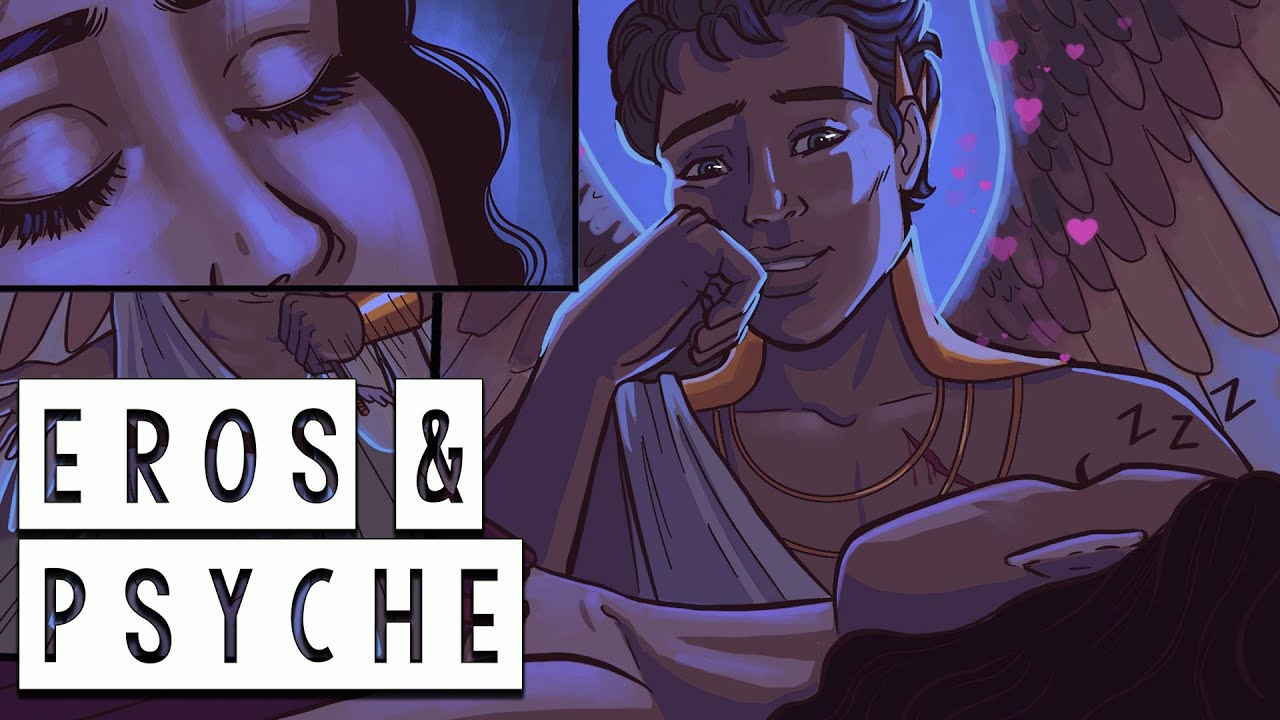 youtu.be
youtu.be
I found this great video of the myth of Eros and Psyche. A very fascinating myth.

A fascinating analysis of the themes and motifs common to the mythologies and oral traditions of a variety of ancient cultures. Campbell delves into mythology in search of some perennial or fundamental truth.

I read 'The Iliad,' 'The Oddysey,' and 'Beowulf' when I was in high school. Followed by parts of 'Inferno' and 'Cantebury Tales.' In college when studying Japanese, I read 'The Tale of Genji.' The long form of 'sagas,' whether in poetic or prose form, pull me in. What are some long-form myths and tales you enjoy?

Conceptualizing time and the spiritual realm has always been made easier for me with visuals. 'The Evolutionary Tree of Religion (Faith, Myths, & Mysticism) v2' by Simon E. Davies is probably my favorite way to explore how humans perceive the supernatural.
Here's a fun, ten-minute video from PBS Digital Studios and hosted by Dr. Moiya McTier & Dr. Emily Zarka that discusses trees, especially World Trees (or Great Trees) as seen in so many mythologies, and their prevalence in ancient stories. From Baobab trees to Yggdrasil. https://www.youtube.com/watch?v=Txy-3IpFz8M
I'm currently reading the Third Edition of Rosenberg's *World Mythology*, which is what I referenced when writing the Enuma Elish summary before. For anyone wanting to read more of her work, the Second Edition of her book is available online free and has a ton of great content: https://archive.org/details/worldmythologyan0000rose
Here's a quick synopsis based on some notes that I jotted down as I was looking over a version of the Enuma Elish that was written in Donna Rosenberg's World Mythology textbook. What is the Enuma Elish? Great question! It's an ancient creation story, dating back to the Babylonians in Mesopotamia, perhaps reaching as far back as 2000 BCE. https://en.wikipedia.org/wiki/En%C5%ABma_Eli%C5%A1 Everything interesting about this is a credit to Rosenberg's work and to the Babylonian people that documented the stories on clay tablets so long ago, and everything wrong with it is undoubtedly down to my own poor comprehension. Enjoy! The Enuma elish Apsu and Tiamat, the fresh- and saltwater primordial gods that existed before all else, have a mist-baby named Mummu. Two more gods form in the mix of salt and fresh water, notably not referred to as children of Apsu and Tiamat, nor as siblings to each other, but it seems implied. These two are Anshar (male) and Kishar (female). Anshar and Kishar have a child named Anu (god of the Heavens). Anu fathers Ea, who is super-wise and becomes god of the Earth. Eventually he will settle down and marry Damkina, but first he and the rest of his still-living ancestry make a lot of noise and royally piss off Tiamat. Now-enraged Tiamat tells Apsu to get the offspring in line. Apsu says he prefers the nuclear option, kill ‘em all. Mummu is on board. Tiamat suggests they chill a bit. They do not chill. They choose violence, and they begin preparations to wage a battle. The offspring gods caught wind of their impending demise and got ready. Clever Ea made a trap, put Apsu to sleep, chained him up, killed him until he was quite dead, imprisoned Mummu (because you don’t just go leaving witnesses, ok?), and Bob’s your uncle. Now for some victory nookie. Ea and Damkina shack up and have a son named Marduk. Marduk is the wisest and strongest of the gods. Truly, a sight to behold. Ea made Marduk all-seeing and all-hearing, and then also made him bright as the sun. Time goes on, the kids get rowdy again, Anu is kicking up a tempest and it angers the Old Timers. Kingu is especially perturbed. He calls out Tiamat for letting all of this happen. Tiamat finally sees it Kingu’s way and they get ready to rumble. Kingu is Tiamat’s head commander. It’s important to point out here, I think, the fact that there still does not yet exist an Earth. Or anything. Except the gods and their drama, I mean. An endless void… and god-drama. Ea finds out there is another fight coming. He freaks out a bit and asks Anshar for advice. Anshar tells him to be brave and strong and to kill Kingu just like he did Apsu. Ea is apparently super inspired because he sets out to give it the old college-try, realizes on the way that he’s gonna die if he tries to fight this, and promptly chickens out and runs home. Anshar tells Anu to go next. Same deal, he’s super into the idea, gets scared, funs home. Good thing there’s another boy, right? They tell Marduk he’s got to help them. He basically says “But… it’s only a girl lol” and then goes on to tell them he’ll do it, but they should recognize his most supreme excellence by making his very words govern the fates. The gods call a meeting and decide they will agree, but only if Marduk can do a magic trick first. Marduk makes a towel disappear - and then, reappear ! if you can believe it! The gods must have known they were in serious trouble because at this point they agreed to Marduk’s terms. He is now the Supreme God of the Void. Huzzah! Storm God Marduk outfits himself with awesome armor and weaponry. He raises seven winds and four beasts, and meets Tiamat in battle. (Kingu fled, scared) He defeats Tiamat. Half of Tiamat’s body becomes the Earth, the other half the heavens. They catch Kingu, murderize him, and use his blood to give life to all mankind.
Greetings all, and welcome to the Mythology board! I have recently embarked on an adventure through early Mesopotamian mythology, and intend to keep exploring more cultures moving forward through history. With that in mind, this space is meant to be a fun and open community for people to chat about their favorite mythologies, share what they have learned, ask questions, and hopefully we can all learn and experience the magic, myths, and legends from the many cultures that came before us.

